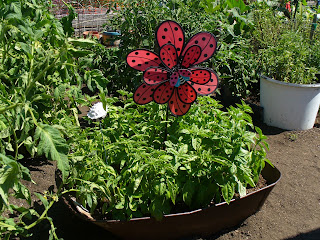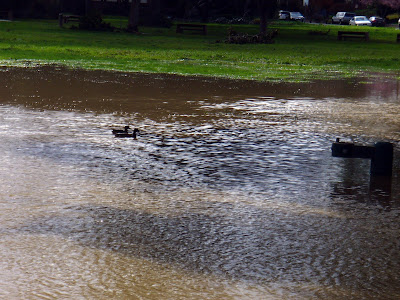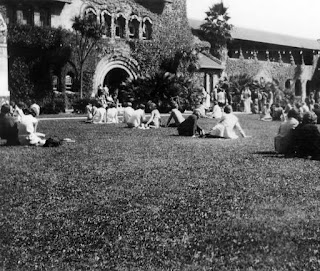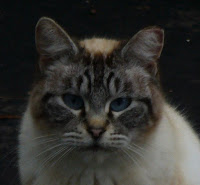 |
| Lady and Gent |
How to begin after going dark since the end of April here at Insight Walks? I might begin at the beginning with chickens, or would that be eggs? This handsome hen and rooster pair are a good entryway. I found them scratching for insects in the moist, deep mulch nourishing Emma's plum and apple trees. The hen flung wood chips into her escort's wattles as she dug herself a cool little bowl in the earth. For his part, he stepped lightly around a tree trunk hanging close to her side.
Chickens as well as ducks roam the park fields and field edges freely; they sometimes wander out of the park's fences into adjoining environs such as the Shell car wash at the intersection of King and Story Roads or the #22 Eastridge Bus Stop on King near the park's entrance gates. Everything outside this historical park is rush and bustle. Had Emma Prusch never donated her farm in the 60s to San Joseans to sustain and commemorate a rural county farm atmosphere, there would be another fast food franchise or shopping plaza plopped over these orchard and garden acres without a thought of trees or pollinator gardens or a green place to lie down on a blanket.  |
| Art and Life on the Outside Wall of Veggielution Kitchen |
One goat was pregnant and walked around like she had just swallowed down an easy chair. A woman holding her toddler up over the top planks of the animal fences exclaimed in an Asian language (I am not sure which one) with intermittent "Bay-bee!" "Baybee!!" thrown in. We all watched the soon-to-be mother together while a little girl turned furrowing her brow and peering around and between the goats looking for the 'Bay-bee. A lot goes on here, especially in summertime; Browse the Emma Prusch Farm Park Foundation's site for its historical overview and further information on events, programs, and classes.
I listened to a birthday crowd smashing a piñata as I lay on the grass, then walked across the lawns to peer in at all the bounty of the plots in Cornucopia Community Garden: Fat tomatoes, springy basil and glistening tufts of corn silk on ripening ears of corn. I lifted the gate anchor, slipped inside and after taking some camera shots of the burgeoning harvest found myself locked inside the horn of plenty. My mouth watered in front of a tub of crowded basil--
I approached a Mexican family busy harvesting ears of corn and asked if they might let me out. The young man in white sneakers told me the gardens are private and after an uncomfortable silence his father walked me to the gate and spun the combo to let me out. He asked me about my pictures and I complimented him on the garden's health.
We began our walk ushered in by chickens and we shall part ways with a glimpse at the elegant simplicity of corn silk mingled in sunlight--
















































